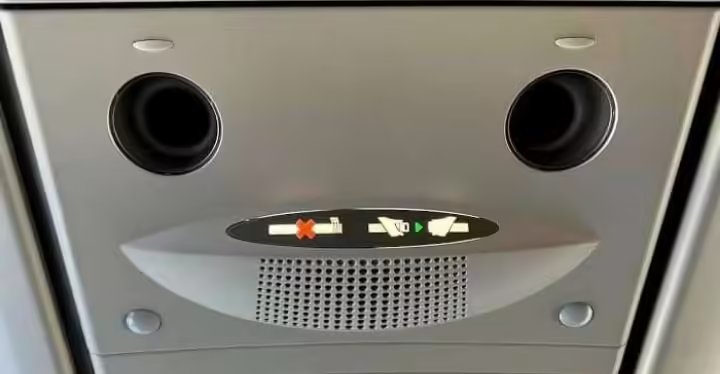In a move hailed as a victory over outdated regulations, the Federal Aviation Administration (FAA) has officially erased a 30-year-old rule requiring no-smoking signs to be installed and illuminated on commercial aircraft. This decision marks a significant shift in aviation policy, reflecting the fact that smoking on airplanes has been banned for decades and that the rule had long outlived its purpose.
The no-smoking sign rule was initially introduced at a time when smoking was common in public spaces, including on airplanes. In the 1980s and early 1990s, smoking was gradually phased out on domestic and international flights due to growing health concerns and the advocacy of non-smoking groups. By 2000, smoking was prohibited on virtually all flights worldwide, making the mandatory no-smoking signs redundant. However, the signs remained a fixture on planes due to the FAA regulation that required their presence and illumination during flights.
The recent decision to eliminate the rule is seen by many as a commonsense move that acknowledges the changing landscape of air travel. The FAA’s ruling allows airlines to remove the signs at their discretion, giving them the flexibility to repurpose cabin space and potentially reduce maintenance costs. This change is part of a broader effort by the FAA to modernize and streamline aviation regulations, eliminating rules that are no longer relevant or necessary.
Airline industry experts have largely welcomed the decision, noting that the no-smoking signs have been a vestigial feature of aircraft cabins for years. While the signs were once crucial in reminding passengers of smoking restrictions, they have become unnecessary in a world where smoking on planes is universally understood to be illegal. Furthermore, the presence of no-smoking signs alongside newer signs, such as those reminding passengers to fasten their seatbelts, created unnecessary clutter and could potentially lead to confusion.
Critics of the rule change have raised concerns about the potential for passenger confusion in the absence of the no-smoking signs. However, proponents argue that modern passengers are well aware of the smoking ban and that airlines can implement alternative measures, such as in-flight announcements, to reinforce the prohibition. Additionally, they point out that the removal of the no-smoking signs does not mean the end of enforcement; the smoking ban remains firmly in place, with severe penalties for violations.
This regulatory rollback is part of a broader trend within the FAA to update its policies in response to technological advancements and changing passenger needs. By eliminating outdated rules, the FAA aims to reduce the regulatory burden on airlines while maintaining safety and efficiency in air travel. The agency has emphasized that safety remains its top priority, and the removal of the no-smoking sign requirement does not compromise the stringent safety standards that govern the aviation industry.
For airlines, the decision offers a small but symbolic victory in the ongoing effort to modernize aircraft cabins. The removal of no-smoking signs may seem like a minor change, but it represents a broader recognition that aviation regulations must evolve in tandem with the industry they govern. As the FAA continues to reassess its policies, this move signals a willingness to embrace change and eliminate regulations that no longer serve their intended purpose.
